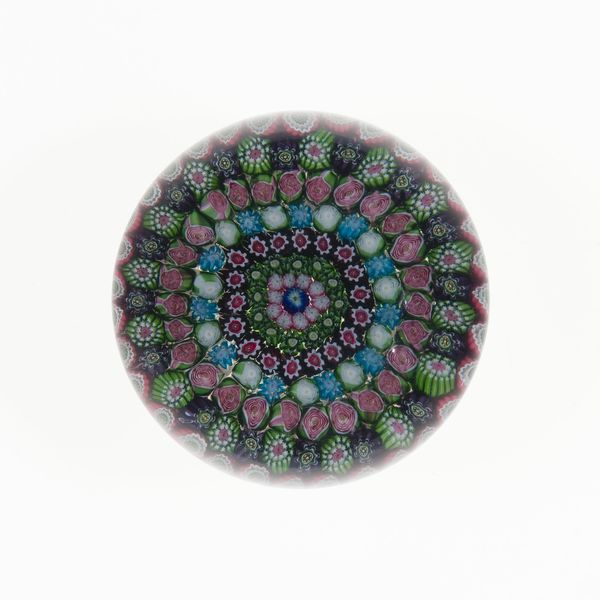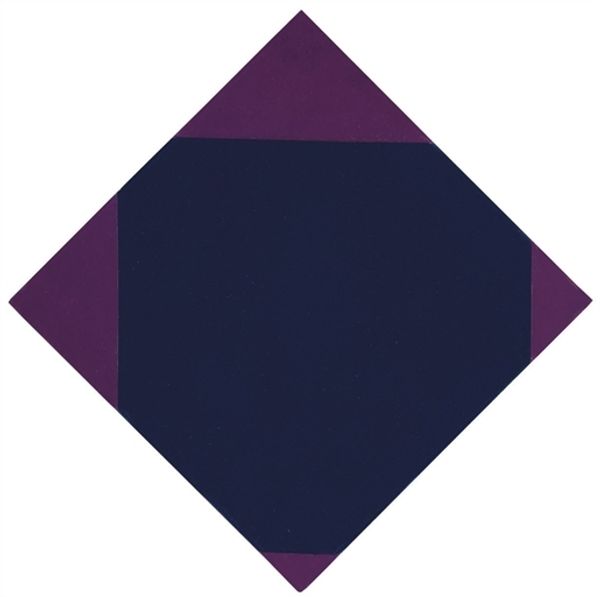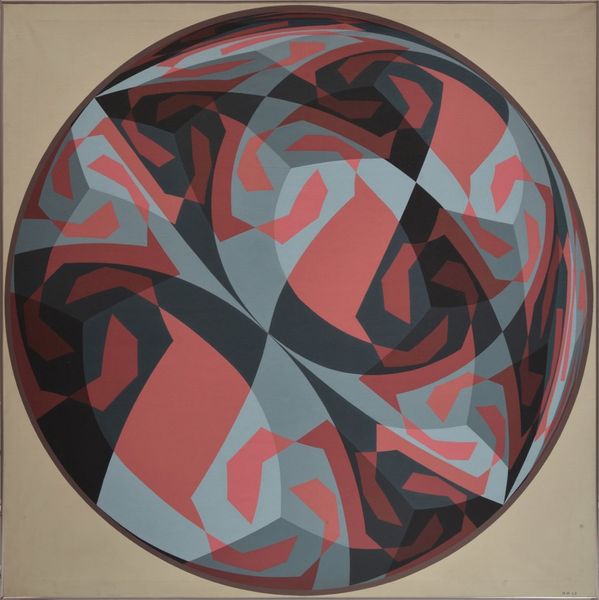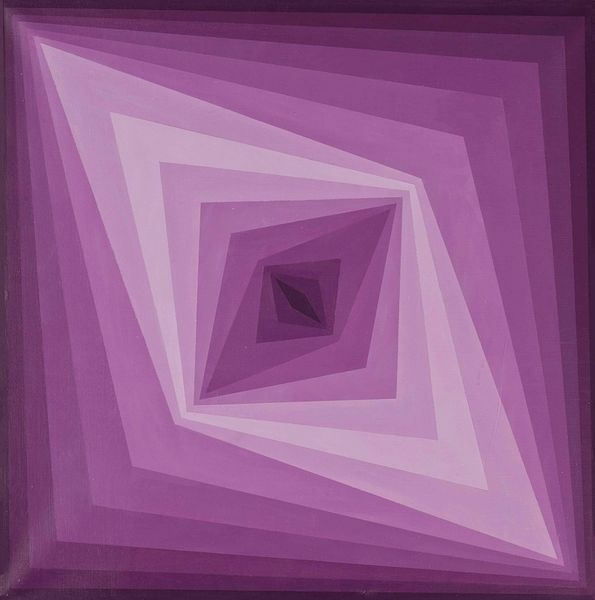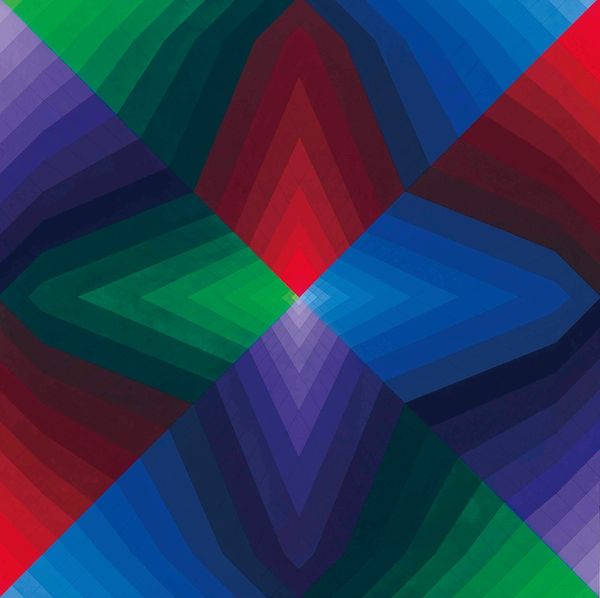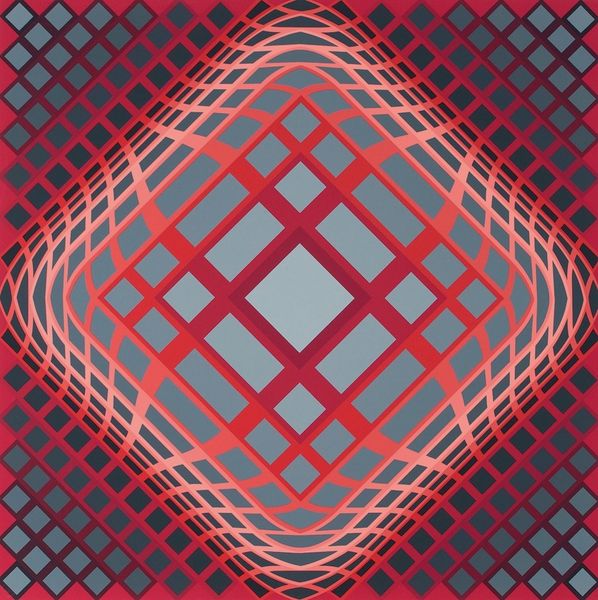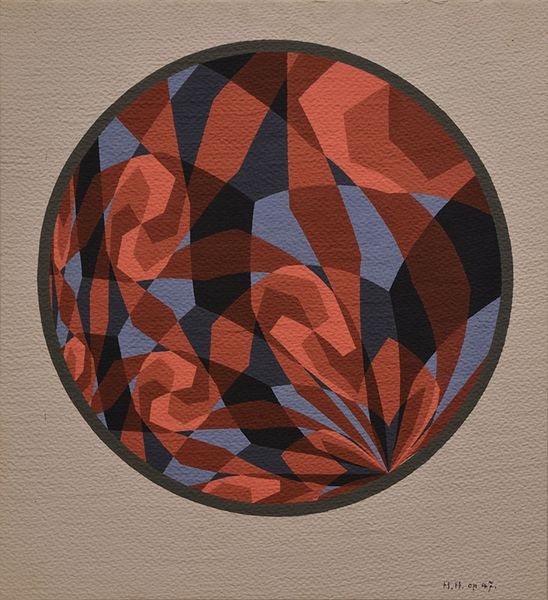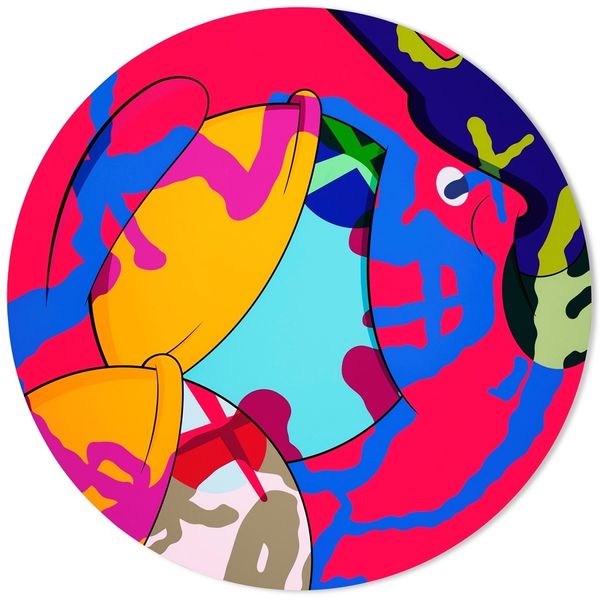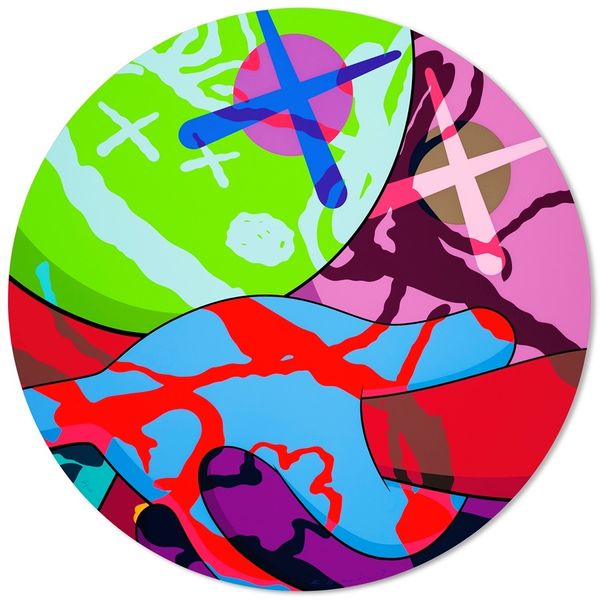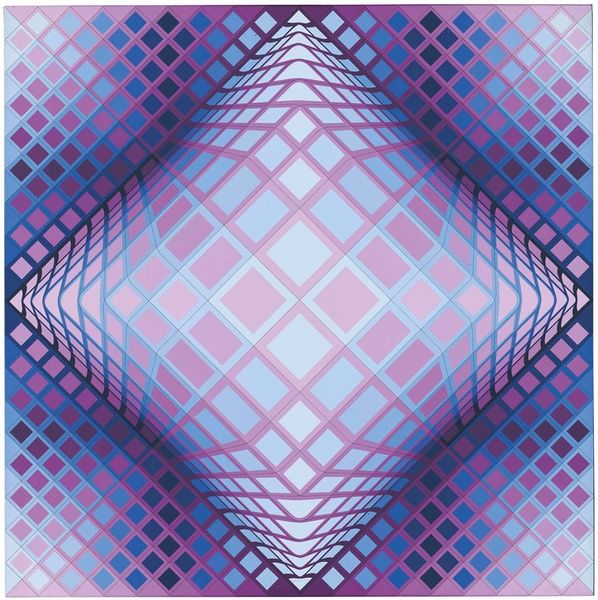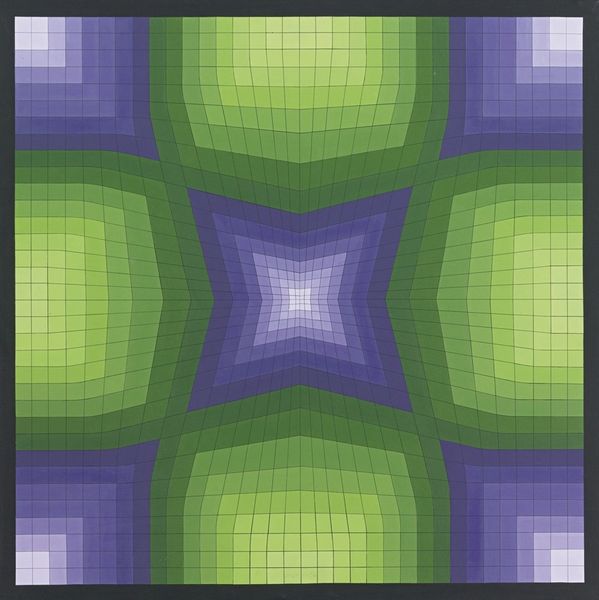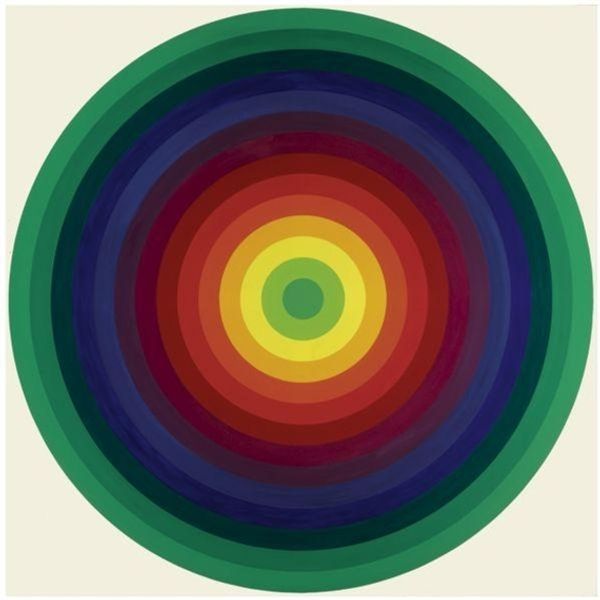
#
concrete-art
#
pattern
#
geometric pattern
#
abstract pattern
#
geometric
#
geometric-abstraction
#
abstraction
#
pattern repetition
#
hard-edge-painting
Copyright: Hans Hinterreiter,Fair Use
Curator: It looks like a gemstone, a faceted jewel! I'm immediately drawn in by the cool palette, and then disoriented by the perspective play of the geometric planes. Editor: Yes, it certainly possesses a mesmerizing quality. What we're observing is Hans Hinterreiter's "Opus 48," created in 1958. Hinterreiter, working within the Concrete Art movement, explores the boundaries of mathematical form and color theory. The use of color creates depth but also subverts perspective. Curator: Concrete art is the perfect term, in that it prioritizes an artwork’s materiality, as well as mathematical or geometrical foundations, in defiance of any symbolic references. Thinking about labor here—the artist precisely calculating and layering these hard-edged forms, this speaks volumes. Were the patterns derived from calculations, or chosen subjectively, I wonder? Editor: That’s an excellent question. There's definitely a systemic quality suggesting underlying mathematical calculations. If we look at the piece within the historical context, the mid-20th century saw significant developments in computing and mathematical theories that deeply influenced artistic practices, but were those technologies accessible to all? If not, did they inadvertently affect what materials were available? Curator: You make me consider how Hinterreiter's position – his access to resources and his socio-political location within that era – played into the accessibility to material and, indeed, technological explorations of these forms. What is being communicated through such exactness and this almost impersonal application of shapes and colors? I am unsure if there is a class at play through Concrete Art's clean exactness, too! Editor: Interesting. Thinking about the labor invested in precision and its display within a cultural context that valorizes specific forms of intellectual production helps me view the artwork through the lens of craft versus ‘fine art’. We should not ignore the material value embedded in precision; the artist offers a meticulously constructed piece of calculation and planning. Curator: This dialogue itself illuminates the artwork further, adding another layer of perspective. Thank you. Editor: Absolutely. Analyzing the materials of art gives dimension and sheds new light on not just the work but how we view labor within its making.
Comments
No comments
Be the first to comment and join the conversation on the ultimate creative platform.
